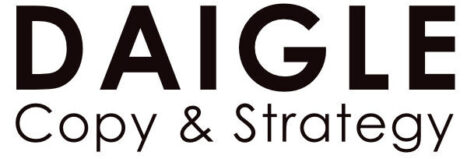
It’s 2023.
You know what that means. It’s time for anyone with internet access to start listing their predictions for the new year.
And as usual, it didn’t take long for someone to proclaim the death of social media. Just like in 2022.
And 2021. And every other year that social media has been in existence.
I didn’t even have to wait for the new year this time.
Because no less than three outlets proclaimed social media’s demise back in November: The Atlantic, Yahoo News, and some guy on Medium.
Never mind that these three outlets haven’t been relevant since I had hair. Well, that’s not entirely true.
Medium has never been relevant.
Still, I read all these articles with great interest.
Why not? The writing was good.
And it was fun to watch them disagree about why social media is dying, when it will die, and how it will die.
Here’s why these three amigos killed social media
In fact, none of the authors even agreed on the definition of social media.
But they all pointed to some common pieces of evidence for saying it was dying (or already dead)
For example, they pointed out that only a few short weeks after his takeover, Elon Musk turned Twitter into something completely different from what he’d bought.
By adding features like crushing debt, mercurial business, decisions, and censorship flip-flops, he has transformed Twitland from an ordinary study in non-communication to a real, live dumpster fire.
Meanwhile, they theorized Mark Zuckerburg’s pivot to the metasphere, or whatever that thing is, has left Facebook a financial disaster and a place where only old farts like me spend their time.
That one really bummed me because I didn’t want to be reminded that I’m old.
Also, I own stock in Meta. So that makes me old and stupid.
(Sigh)
And the news only gets worse. Even the social media juggernaut TikTok isn’t safe from extinction.
Turns out it is the social media equivalent of a Mockingjay for the Chinese government. And the U.S. Congress has declared open season on it.

So, Goodbye Social Media?
Yep, have a great day.
Just kidding. Despite the good points raised in the articles and congressional efforts to thwart Chinese spies, I don’t think social media is going anywhere.
That’s because social media is a business segment, like retail.
That landscape may change and it may change rapidly. Like when retail went from Sears to Amazon in just over a decade.
But it’s going to remain because it gives humanity something it needs.
You’ll just have to go to different platforms to build a brand, gather a following, gain clients, and listen to some egghead bloviate about things you already knew.
And you’ll have to do it every few years. Which means we’ll all be spending a lot of time, energy, and probably cash trying to keep us with the shifting sands of the internet.
Now, now, stop crying. It’s not that bad.
Wait, that’s me crying. Not you.

Okay, maybe it really is that bad.
My rationale is simple. History shows us that business segments tend to morph at their rate of growth.
That means very rapid and constant change in social media.
Don’t get me wrong, I love social media. It has genuinely helped me over the years.
But it takes a long time to gain traction on platforms. And slow traction in a rapidly changing environment is tough.
Really tough.
But there are some things you can do to wean your business off the social media rollercoaster and build a solid, loyal customer base.
Let’s check ’em out.
Build a marketing strategy as if social media doesn’t exist. But still use social media.
I can’t tell every business owner out there what their strategy would be if there were a socialmediapocalypse (new word!).
There are too many variables for one post. But I can offer some questions you should ask to make your marketing strategy for the next five years, ten years, whatever.
What would you do if every single social media platform in the world were outlawed tomorrow?
Every single one.
No Facebook, SnapChat, TikTok, Discord, or MySpace (Yeah, it’s still a thing).
I know that probably won’t ever happen. Still, it is well within the realm of possibility that the social media apps you use for business today might go the way of Friendster in the next few years.
If that happens, then what?
Think about how dependent you’ve become on social media.
You use it to build networks, get feedback, find potential clients, advertise, and surf the net aimlessly when you should be working.
There’s so much more. I’m really just scratching the surface.
Sure, your strategy could be to hop from one platform to the next.
Or you could spread yourself thin on multiple platforms and never really master all of them.
Or you could pay thousands of dollars to someone else and have them not master them for you.

The upshot is this. Your marketing strategy can be to continue to use social media, but you’ll need to keep your eye on a very dynamic landscape.
Does your business really have resources for that?
I’m not trying to be the wet blanket here, just trying to be a realist. That’s why my own marketing plan contains the statement.
“Social media is a useful tool, but it is rented, never owned. It is better to put equal or greater emphasis on other tools that provide greater autonomy and control.”
What are those “other tools?”
Those other tools are well within your locus of control. They are email marketing and your website.
There are others, like your blog, but we’ll stick to these two in this post.
Now, I can almost see the eyeballs rolling. You are probably thinking, “Old guy with old ideas.”
And you’d be right.
But that’s okay because those tools still work.
And you have almost total control of them.
Let’s look at incorporating them into your marketing strategy if you aren’t already doing so. If you are, let’s take a look at making it better.
Email marketing
First, there is one big reason to emphasize email in your marketing strategy.
The ROI on email marketing is nearly perverse.
Constant Contact and HubSpot list the average return in 2022 as $36 earned for every $1 spent.
Sure, that’s down from an average of $42 in 2019, but it still outpaces the next best performer (SEO, not paid ads) by nearly $14.
And that’s just the average.
Now, it’s not all sunshine and roses. First, you’ll need to build an email list if you haven’t already done so.
I’m not going to lie; it’s time-consuming and difficult. But here are some resources that can help you learn how to get started.
Hubspot – they’ve been in email since the beginning. Hang on to their every word.
Mailchimp – they make their living in email. They are only successful if you are.
OptinMonster – these guys lean on social media for list building, but that’s still a viable option.
Once you’ve built your list, everyone is a warm lead. Your list gave you their information. They want to hear from you.
You can’t say the same about an ad on social media.
Once you have the list, build the relationship. Yes, email marketing is a relationship.
If that sounds daunting, then just think about this.
Where would you like to pour your energy into someone who wants to talk (and buy) from you or someone who couldn’t care less?
Of course, you want to pay personal attention to your list, no matter the size.
That’s hard, but it can be done. Just look at Chris Orzechowski.
Here’s a guy with a multimillion-dollar agency and a huge email list, but he’s emailed me personally several times after I reached out to him.
Not a robot return email, a real live response from him, personally
He’s taking the time to answer my questions and learn more about me, a virtual nobody.
Think he has a loyal customer in me? You’d better believe it.
Nurturing your email List
So, you see the sense in caring for the people on your list.
But how do you do it?
Well, it comes down to knowing what to write, how to write it, when to send it, and how often.
That’s hard, too. There’s a lot to unpack in that last sentence. If you have the time and are a strong writer, learn about email placement and strategy.
There are a million courses out there, but if you are a newbie, I’d suggest starting with HubSpot’s email marketing certification course.
It’s free and will give you a good overview of email marketing.
Of course, if you can afford it, then hire a good copywriter. Of course, I’m a copywriter, so I would say something like that.
But it’s true!
Heck, if Alex Haley‘s shipmates were savvy enough to hire him to write love letters to their girlfriends, surely you can see the value in hiring someone to nurture hundreds or even thousands of your relationships.
I’ve got an article here on things you should look for in a good copywriter and how to ask the right questions in discovery calls.
Okay, I could go on and on, but you get the picture. Email marketing has several advantages over social media.
If you haven’t started yet, look into it.
If you are already doing it, keep learning and make it a large part of your marketing strategy.
Now that email is covered, let’s look at the other platform you control.
your website
I know, it’s an obvious answer.
But your website can always do a little more for your marketing efforts.
That being said, it’s always a good idea to review the goals you have for your website and how those play into your marketing strategy.
Discussing goals can get complicated, but I’ll keep it simple. There are only two common denominators.
First, everyone’s goals will be different. But you still need a reason for your website to exist.
Second, you’d better be crystal clear on those goals. If you aren’t, your website can actually repel customers.
That’s because unclear goals lead to confused customers. Check out my blog post on how to avoid this very dangerous problem.
You may want to invest in a site audit from a professional. If money’s tight, I recommend Gill Andrew’s book Making Your Website Work.
It’s only about $10 bucks, but it is worth its weight in gold. Take a look at some of the excerpts in the link. You’ll see what I mean.
The book is loaded with tips on how not to confuse customers and get clients more interested in your offer.
By the way, I don’t have any affiliation with Gill’s book; it’s just good stuff.
Once your goals are in place, ask yourself this question.
“What more can my website be doing to replace some of my social media advertising?”
Can you add content marketing that positions you as an expert so well that people go straight to it?
Can you create a lead magnet so good it can be left ungated, and people will still offer their email after they get it?
Can you make it interactive for your customers so they feel it’s a place to ask questions and offer ideas?
Can you offer so much value it actually gets existing customers to give referrals?
Those are all new potential goals that can be added to make your website a much bigger player in your marketing.
A player you own and control.
Putting it all together
Social media isn’t dying. Not even close.
But it is getting harder to manage, and you have very little control over it.
Should you abandon it altogether? I’m not going to.
It still has value for me. But its value as an advertising platform is diminishing simply because of the volatile landscape.
A safer (albeit more difficult) way to safeguard and enhance your marketing efforts is through good old email and your website.
That’s old school, I know. But it is still reliable and stable.
And friend, it’s yours.


Pingback: These 3 inexpensive marketing tactics will make a deep connection with your customers |